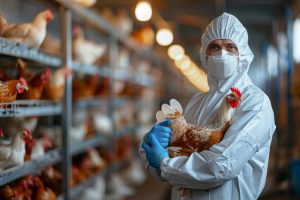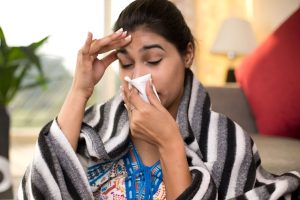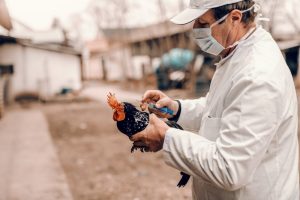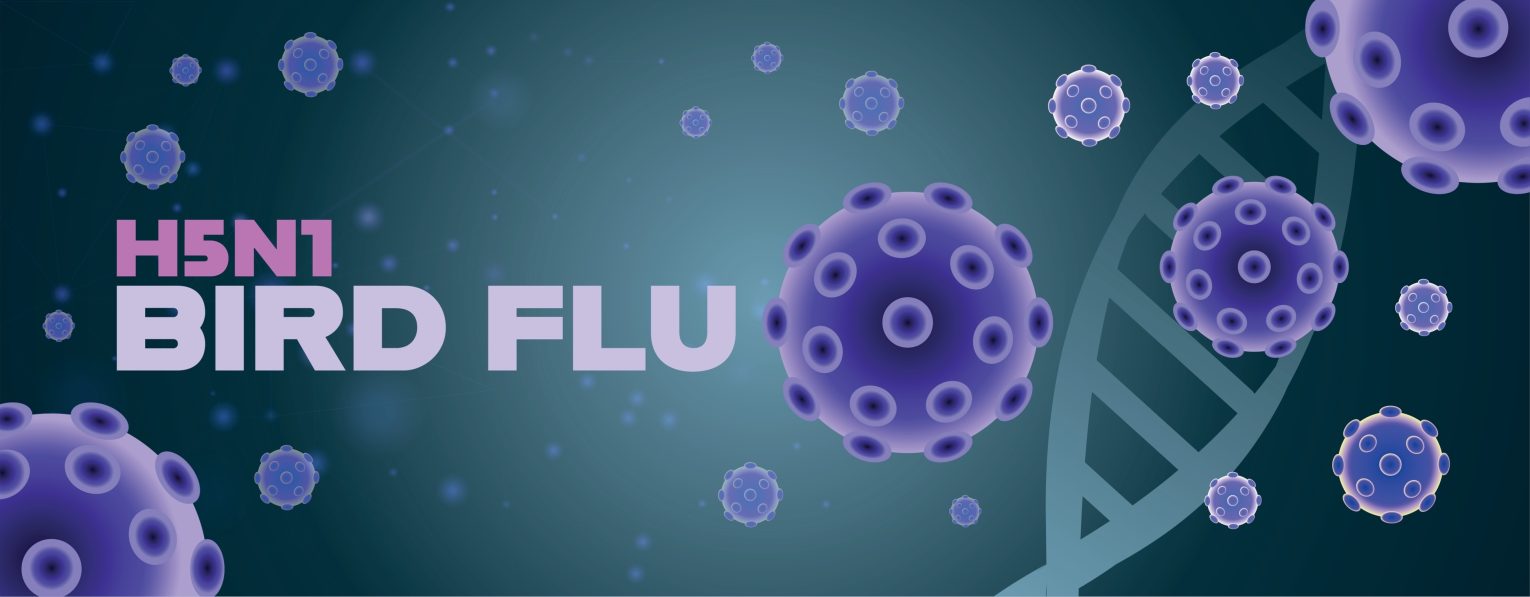Introduction:
Bird flu, or avian influenza, is a viral infection that has been described as highly contagious amongst animals, especially poultry. Even though most of the strains of avian influenza affect birds only, a few can breach species borders and infect humans, making it a matter of significant concern for health authorities. Different bird flu outbreaks in the previous years have caused a lot of panic due to their potential to spread and the economic loss they can bring to the poultry industry. To prevent the fast spread of bird flu and protect the general public health, it is critical to understand how the bird flu virus works, what are its symptoms, how to prevent it, and what effects it has on the world.
What is Bird Flu?
Bird flu is caused by influenza A viruses, which are classified into different subtypes based on their surface proteins: hemagglutinin (H) and neuraminidase (N). The most concerning subtypes for human infections are H5N1, H7N9, and H9N2, which have been linked to severe respiratory illness and high mortality rates in humans.
The disease spreads primarily through direct contact with infected birds, their saliva, nasal secretions, or faeces. Contaminated surfaces and water sources also contribute to transmission. While bird flu does not typically spread easily from person to person, mutations in the virus can potentially lead to human-to-human transmission, raising concerns about future pandemics.
Causes and Transmission:
Bird flu originates in wild aquatic birds, which serve as natural reservoirs for influenza A viruses. These viruses can spread to domesticated poultry, such as chickens, ducks, and turkeys, leading to outbreaks in farms and live bird markets. Human infections occur through:
- Direct contact: Handling infected birds, especially during slaughtering, plucking, or processing poultry.
- Aerosol transmission: Breathing in virus-laden droplets from bird secretions.
- Contaminated surfaces: Touching objects, feed, or water contaminated with the virus.
- Consumption of undercooked poultry: While properly cooked poultry is safe, consuming raw or undercooked meat and eggs may pose a risk.

Symptoms of Bird Flu in Humans:
The symptoms of bird flu in humans range from mild to severe, depending on the strain of the virus. Common symptoms include:
- High fever (above 100°F)
- Cough
- Sore throat
- Muscle aches
- Difficulty breathing
- Pneumonia
- Conjunctivitis (red, inflamed eyes)
- Gastrointestinal issues like diarrhea and vomiting (in some cases)
Severe cases can lead to acute respiratory distress syndrome (ARDS), organ failure, and death. The mortality rate for some strains, such as H5N1, has been alarmingly high, with over 50% of reported human infections resulting in death.

Diagnosis and Treatment:
Early diagnosis is crucial for effective treatment. Physicians use the following methods to diagnose bird flu:
- RT-PCR (Reverse Transcription Polymerase Chain Reaction) Test: Detects viral RNA in respiratory samples.
- Serological Tests: Identify antibodies against avian influenza.
- Chest X-rays: Assess lung infections and pneumonia.

RT-PCR (Reverse Transcription Polymerase Chain Reaction) Test
Bird Flu treatment involves:
- Antiviral Medications: These drugs can reduce the severity of symptoms if administered early.
- Supportive Care: Oxygen therapy, mechanical ventilation, and intravenous fluids for severe cases.
- Hospitalization: Required for critical patients to prevent complications and limit the spread.

Prevention Measures:
Preventing bird flu requires a combination of biosecurity measures, vaccination, and public awareness. Key strategies include:
1. Biosecurity in Poultry Farms
- Restricting access to poultry farms to minimize human-bird interaction.
- Regularly disinfecting equipment, clothing, and hands before handling birds.
- Isolating sick birds to prevent the spread of infection.
- Avoiding contact between domesticated poultry and wild birds.
2. Personal Protection Measures
- Wear protective clothing, gloves, and masks when handling birds.
- Practising good hand hygiene after touching birds or poultry products.
- Avoiding live animal markets, especially in outbreak-prone areas.
- Cooking poultry products thoroughly to eliminate any viral presence.
3. Vaccination
While vaccines exist for poultry, human vaccines are under development. Annual flu vaccines do not protect against bird flu but can reduce the likelihood of co-infection with seasonal influenza, lowering the risk of viral reassortment.
4. Surveillance and Rapid Response
Governments and health organizations monitor bird flu outbreaks to contain the spread. Measures include:
- Culling infected poultry to stop further transmission.
- Restricting trade and movement of live birds in affected areas.
- Public health campaigns to educate communities on prevention.
- Research on emerging strains to develop effective vaccines and treatments.

FAQ’s:
1. What to avoid eating during a bird flu outbreak?
Avoid consuming uncooked or undercooked beef or poultry or drinking unpasteurized (raw) milk.
2. Which test is used to detect bird flu?
Avian Flu (H5N1) test detects the H5N1 virus in a swab sample from the throat, nose, or eye.
3. How can I protect myself from bird flu?
Avoid direct contact with live birds, maintain good hygiene, and ensure poultry is well-cooked.
4. What should I do if I suspect a bird flu infection?
Seek medical attention immediately and avoid close contact with others.
Certain animals, including cats and dogs, can contract bird flu in rare cases.

